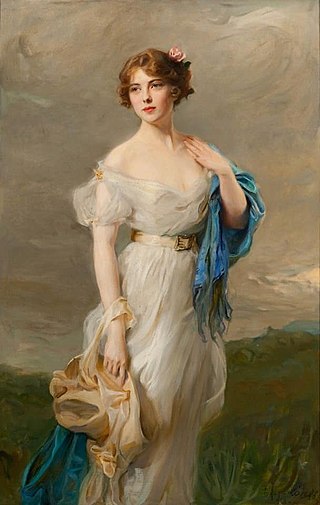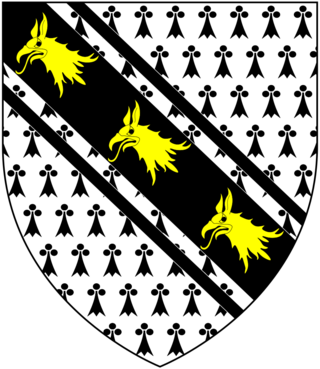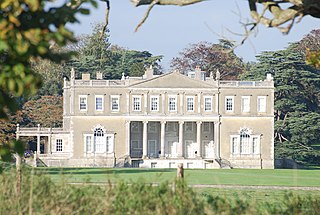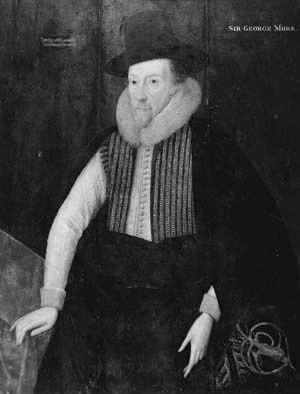Related Research Articles

Lady Anastasia Mikhailovna Wernher was a German-born Russian-British aristocrat and thoroughbred racehorse owner.

Walter Yonge (1579–1649) of Great House in the parish of Colyton in Devon, England, was a lawyer, merchant and diarist.

Someries Castle is a Scheduled Ancient Monument, in the Parish of Hyde, near the town of Luton, Bedfordshire, England. It was built in the 15th century by Sir John Wenlock, whose ghost is reputed to haunt the castle. Although always referred to as a castle it was actually a fortified manor house.

John Wenlock, 1st Baron Wenlock was an English politician, diplomat, soldier and courtier. He fought on the sides of both the Yorkists and the Lancastrians in the Wars of the Roses. He has been called "the prince of turncoats", although some historians suggest the label may not be fair as this behavior was commonplace during the Wars of the Roses. Others contend that even when Wenlock was not actually changing sides, he was engaged in "fence sitting par excellence."

St Mary's Church is an Anglican Church in the centre of the town of Luton, England. The church has a rich and long history, being over 900 years old and has been rebuilt and refurbished constantly over the centuries. The Church is one of the largest in Bedfordshire and considered a fine example of medieval architecture. The Church is part of the St Albans Diocese. The church is grade-I listed and the only one to be a grade-I listed building in the whole of Luton.

Murrough O'Brien, 1st Earl of Thomond was the last King of Thomond, and a descendant of the High King of Ireland, Brian Boru.

Sir John Glynne KS was a Welsh lawyer of the Commonwealth and Restoration periods, who rose to become Lord Chief Justice of the Upper Bench, under Oliver Cromwell. He sat in the House of Commons at various times between 1640 and 1660.
Sir Francis Godolphin (1540–1608) was an English politician, knight, and Member of Parliament.

Robert Beale was an English diplomat, administrator, and antiquary in the reign of Elizabeth I. As Clerk of the Privy Council, Beale wrote the official record of the execution of Mary, Queen of Scots, to which he was an eyewitness.
Sir Robert Napier (c.1542-1615), was an English-born judge who served in Ireland. He was later to become a long-serving member of Parliament.
Sir Robert Napier, 1st Baronet, of Luton Hoo in Bedfordshire, also referred to as Robert Sandy, was an English merchant.

Sir Nathaniel Napier, of Middlemarsh Hall and Moor Crichel in Dorset, was an English Member of Parliament (MP).

Thomas Smith or Smyth was an English politician who sat in the House of Commons at various times between 1628 and 1642. He fought for the Royalist cause in the English Civil War.
Sir Alexander Denton was an English politician who sat in the House of Commons variously between 1625 and 1644. He supported the Royalists during the English Civil War. He also has a house at a grammar school in Buckinghamshire
The High Sheriff of Meath was the British Crown's judicial representative in County Meath, Ireland, from the conquest until 1922, when the office was abolished in the new Free State and replaced by the office of Meath County Sheriff.

Sir George More was an English courtier and politician who sat in the House of Commons at various times between 1584 and 1625.
Sir Robert Payne was an English landowner and politician who sat in the House of Commons at various times between 1614 and 1629.

Sir Thomas Monck of Potheridge in the parish of Merton, Devon, was Member of Parliament for Camelford, Cornwall, in 1626. He was the father of George Monck, 1st Duke of Albemarle (1608–70), KG and of Nicholas Monck, Bishop of Hereford.
Christopher Smith was an English politician.
John Crawley was an English landowner and politician.
References
- ↑ ROTHERAM, George (1541-99), of Someries, nr. Luton, The History of Parliament: the House of Commons 1558-1603, ed. P.W. Hasler, 1981, histparl.ac.uk. Accessed 16 December 2022.
- ↑ John Nichols, The Progresses, Processions, and Magnificent Festivities of King James The First, vol. 1 (London, 1828), p. 519. The next day she went to Haynes Park, the home of Sir Robert Newdigate.